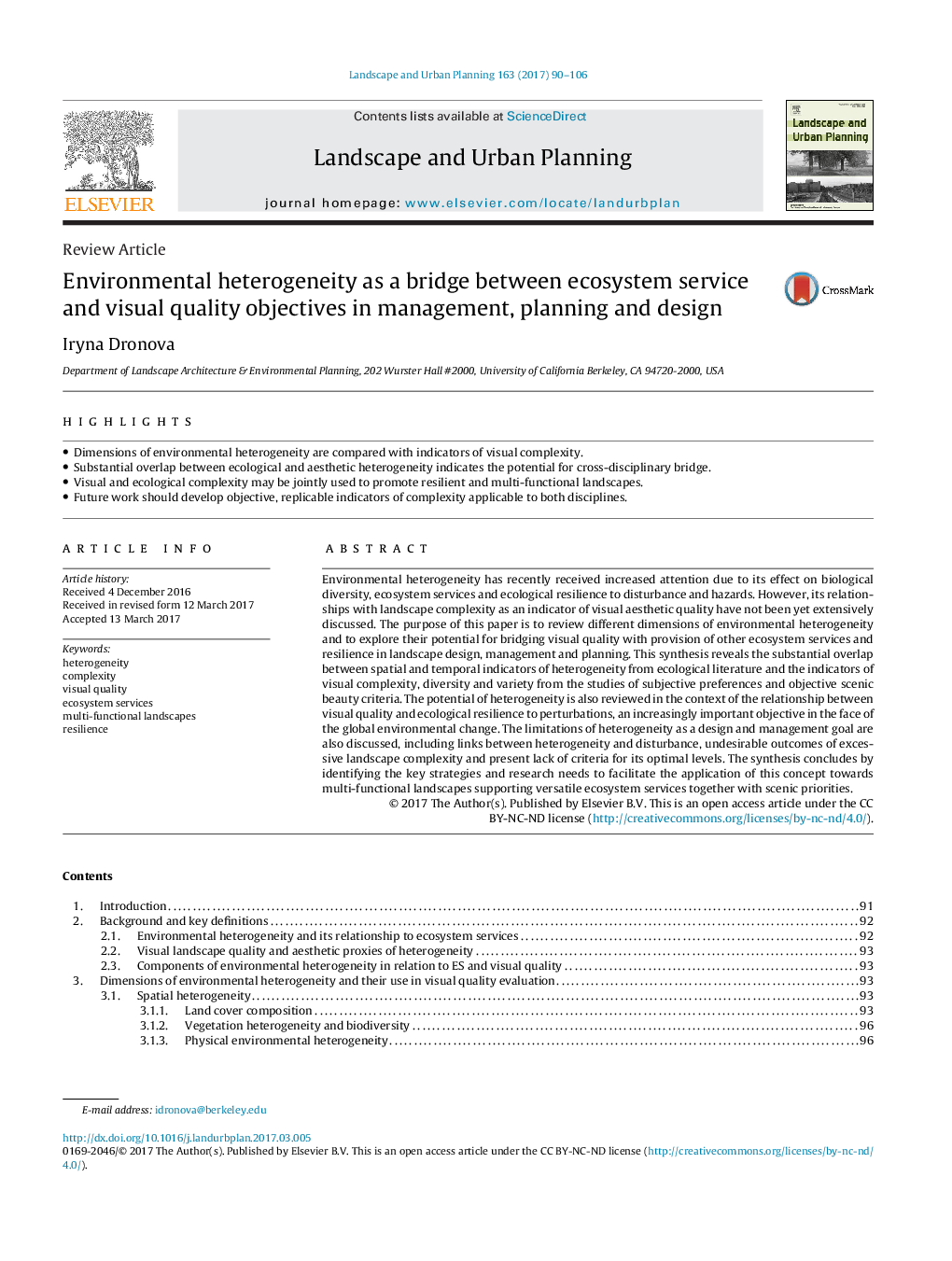| Article ID | Journal | Published Year | Pages | File Type |
|---|---|---|---|---|
| 5115026 | Landscape and Urban Planning | 2017 | 17 Pages |
Abstract
Environmental heterogeneity has recently received increased attention due to its effect on biological diversity, ecosystem services and ecological resilience to disturbance and hazards. However, its relationships with landscape complexity as an indicator of visual aesthetic quality have not been yet extensively discussed. The purpose of this paper is to review different dimensions of environmental heterogeneity and to explore their potential for bridging visual quality with provision of other ecosystem services and resilience in landscape design, management and planning. This synthesis reveals the substantial overlap between spatial and temporal indicators of heterogeneity from ecological literature and the indicators of visual complexity, diversity and variety from the studies of subjective preferences and objective scenic beauty criteria. The potential of heterogeneity is also reviewed in the context of the relationship between visual quality and ecological resilience to perturbations, an increasingly important objective in the face of the global environmental change. The limitations of heterogeneity as a design and management goal are also discussed, including links between heterogeneity and disturbance, undesirable outcomes of excessive landscape complexity and present lack of criteria for its optimal levels. The synthesis concludes by identifying the key strategies and research needs to facilitate the application of this concept towards multi-functional landscapes supporting versatile ecosystem services together with scenic priorities.
Related Topics
Life Sciences
Agricultural and Biological Sciences
Ecology, Evolution, Behavior and Systematics
Authors
Iryna Dronova,
